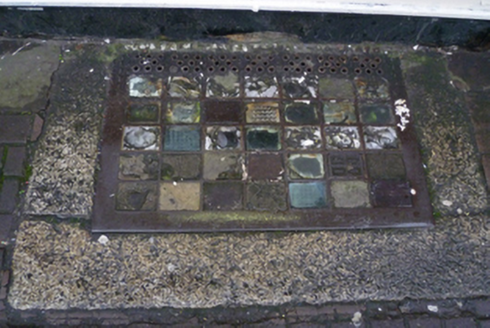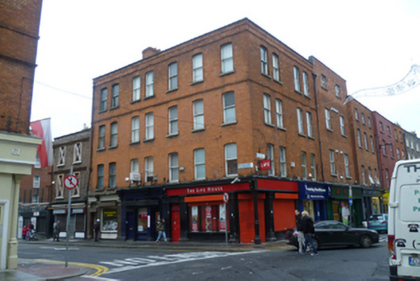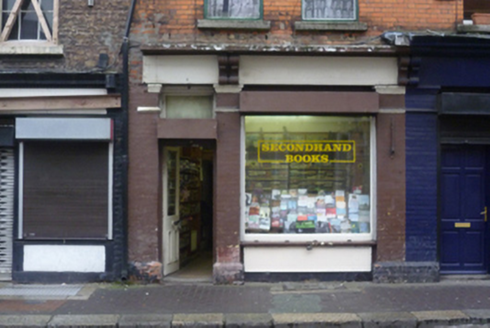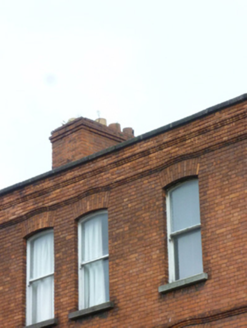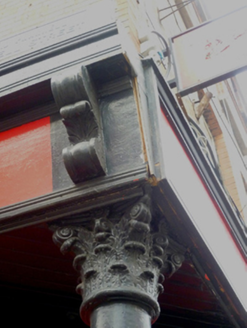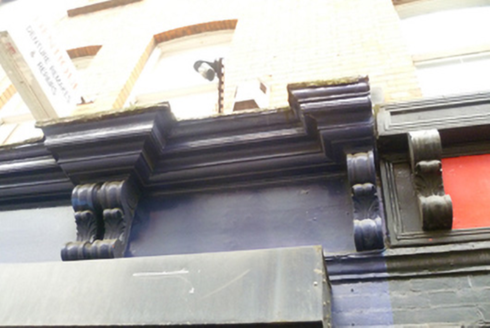Survey Data
Reg No
50010612
Rating
Regional
Categories of Special Interest
Architectural, Artistic
Original Use
House
In Use As
Shop/retail outlet
Date
1740 - 1760
Coordinates
315324, 234637
Date Recorded
04/11/2011
Date Updated
--/--/--
Description
Corner sited group of four four-storey houses over concealed cellar, built c.1750, having two two-bay houses to Capel Street and three houses, two two-bay and one three-bay to Parnell Street. Now in use as individual retail units with accommodation above ground floors. Site severely damaged by fire and refaced in late nineteenth century. Replacement hipped slate roofs behind red brick parapet with squared granite coping, cast-iron hopper and downpipe breaking through parapet wall. Red brick walls laid in Flemish bond having moulded brick cornice, architrave and string course over second floor windows. Moulded string course to base of third floor with curve over second floor window openings. Gauged brick elliptical-arch window openings with brick reveals and granite sills with single-pane timber sliding sash windows having ogee horns throughout. Range of timber shopfronts to ground floor having moulded cornices, some advanced over console brackets and plain fasciaboards, flanked by console brackets over brick pilasters, with some recent security boxes containing rolling shutters. Chamfered entrance bay to corner, having square-headed door opening behind recent steel rolling shutters. Timber fasciaboard of shopfront over-sailing opening with cast-iron supporting column having fluted base and foliated capital. Separate square-headed door openings giving access to upper floors, having timber panelled doors. Glazed panels to street front over concealed cellars.
Appraisal
The substantial corner plot occupied by this group of buildings is shown as being developed on Rocque's 1757 map and is believed to have been refaced in the late nineteenth-century following a fire. The wide facades are greatly enlivened by numerous decorative details, including the various string courses, window surrounds and the later shopfronts. These houses hold an important position in the streetscape while also making a contribution to the nineteenth-century architectural legacy of the north Georgian city.
